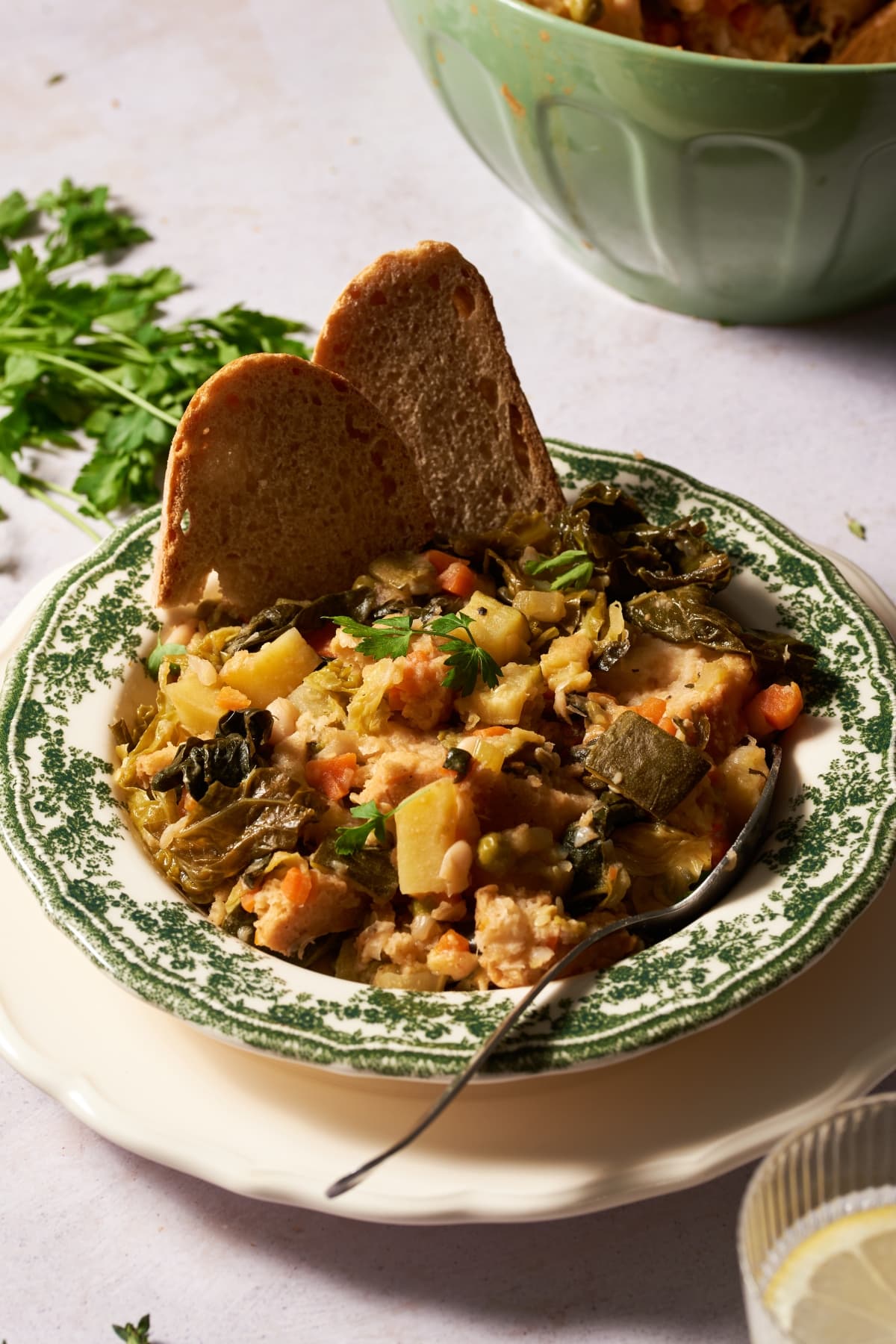Ribollita is a typical Tuscan winter soup that is quite nutritious and great at warming you up on chilly days. It is a semi-solid soup prepared with black cabbage and beans.
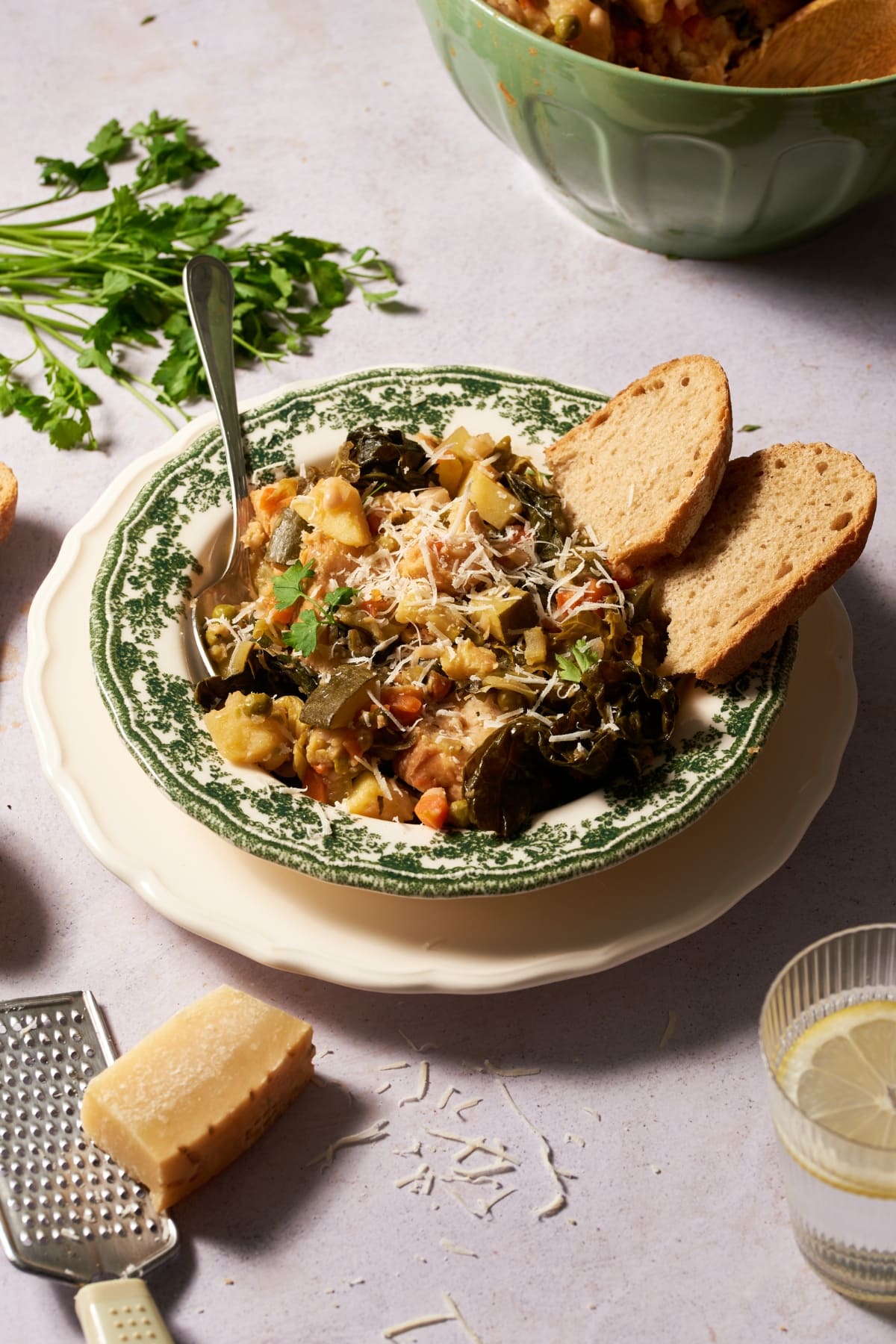
Ribollita literally translates to “boiled a second time.” Thus, as the name implies, real ribollita must be cooked twice if it is going to be considered traditional. The more the soup is cooked, the tastier it becomes.
Ribollita is part of a group of earthy Tuscan soups like acquacotta and pancotto.
Ribollita has peasant origins, with similar earlier versions of bread and vegetable soups that in times past were common among the poor of Tuscany. It was particularly popular in Pisa, Siena, Arezzo and Florence. As is common for peasant dishes, there is no “exact” recipe for ribollita, however there are several key ingredients that create the unmistakable foundation for this delicious dish. These include black cabbage (Tuscan curly black kale), cannellini white beans, and stale Tuscan bread.
Despite there being no “right” recipe, here’s my family ribollita recipe and then invite you to make changes, additions and improvements, as this centuries old dish continues to change and grow with us in modern times.
The most important thing to have on hand is a knife for chopping and a big soup pot.
From start to finish you can have this soup on the table in under 1.5 hours and you will most likely have leftovers to reheat the next day for lunch!
You might have to head to the store for this one, but perhaps not because kale has gotten so popular lately that there is a chance you will have some in your fridge. The list is long but the ingredients are all inexpensive, easy to find and delicious when combined.
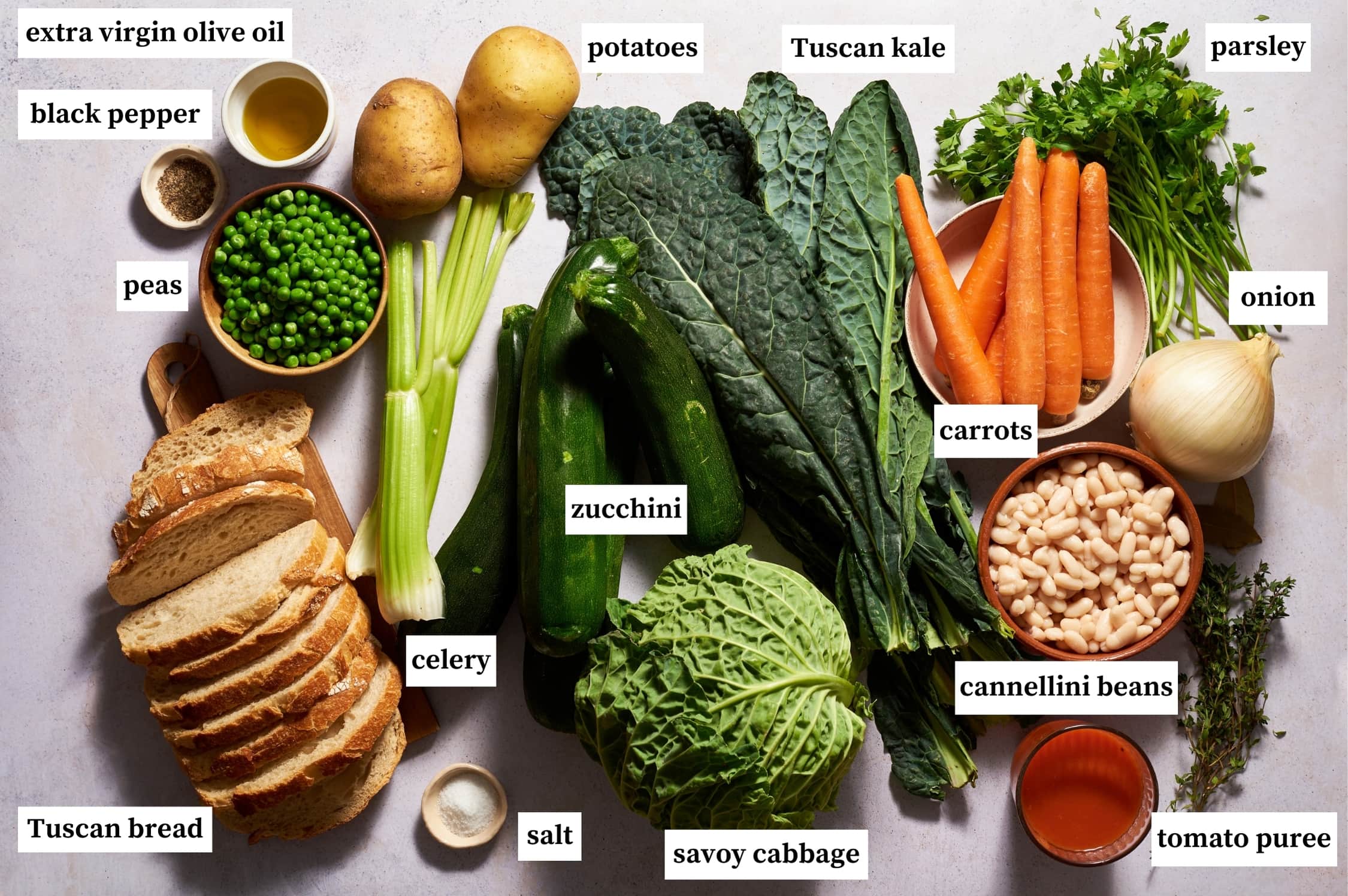
Whip up a rich and hearty meatless dinner tonight straight from the Tuscan peasant kitchen. Here is a step-by-step breakdown of how to make it at home.
Cut the onion, celery, and carrots into small pieces to make the “soffritto” base for the soup.
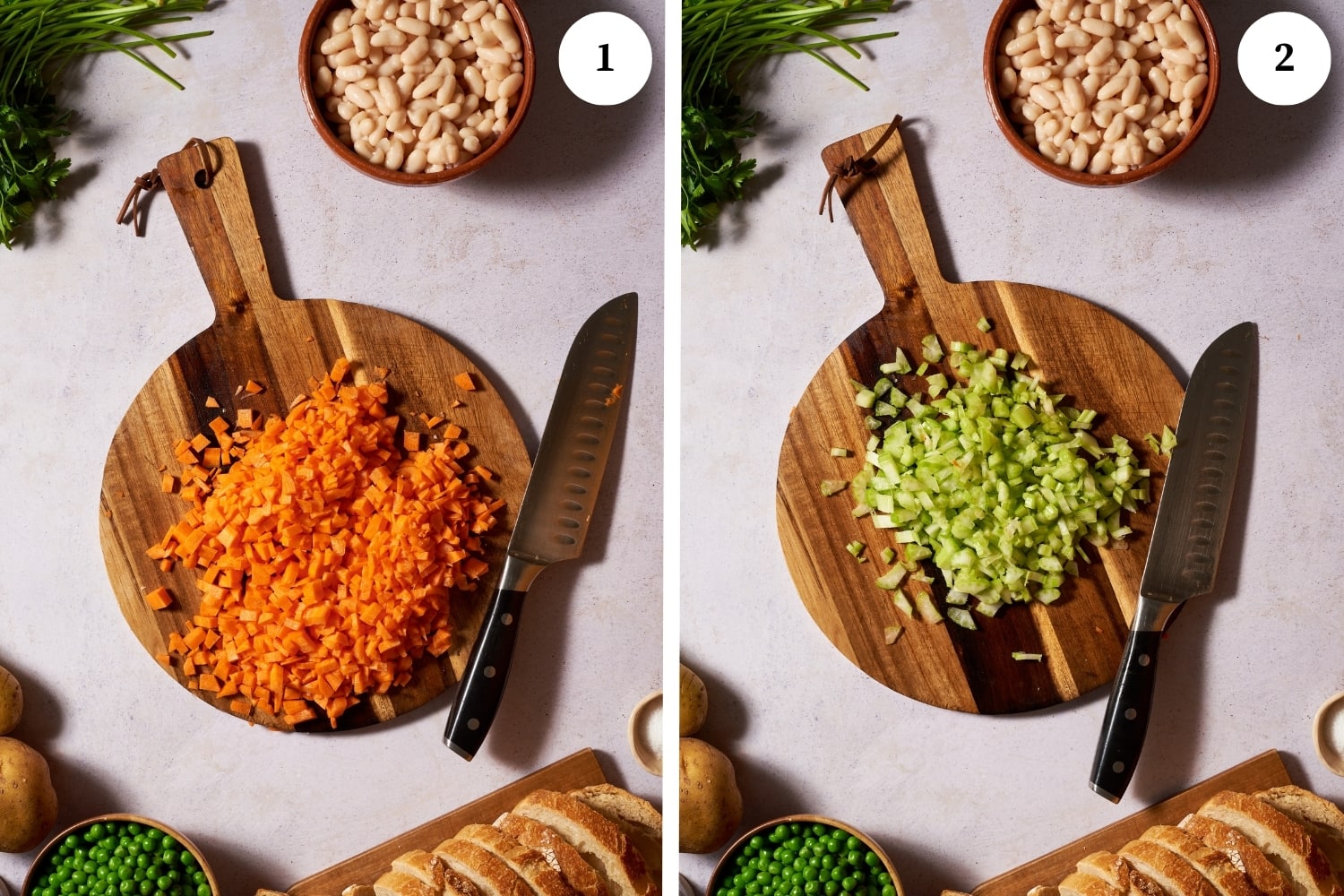
In a large pot, heat the olive oil and saute the onion, celery, and carrots over medium heat (photo 3) once softened, add the black kale and the savoy cabbage (photo 4).
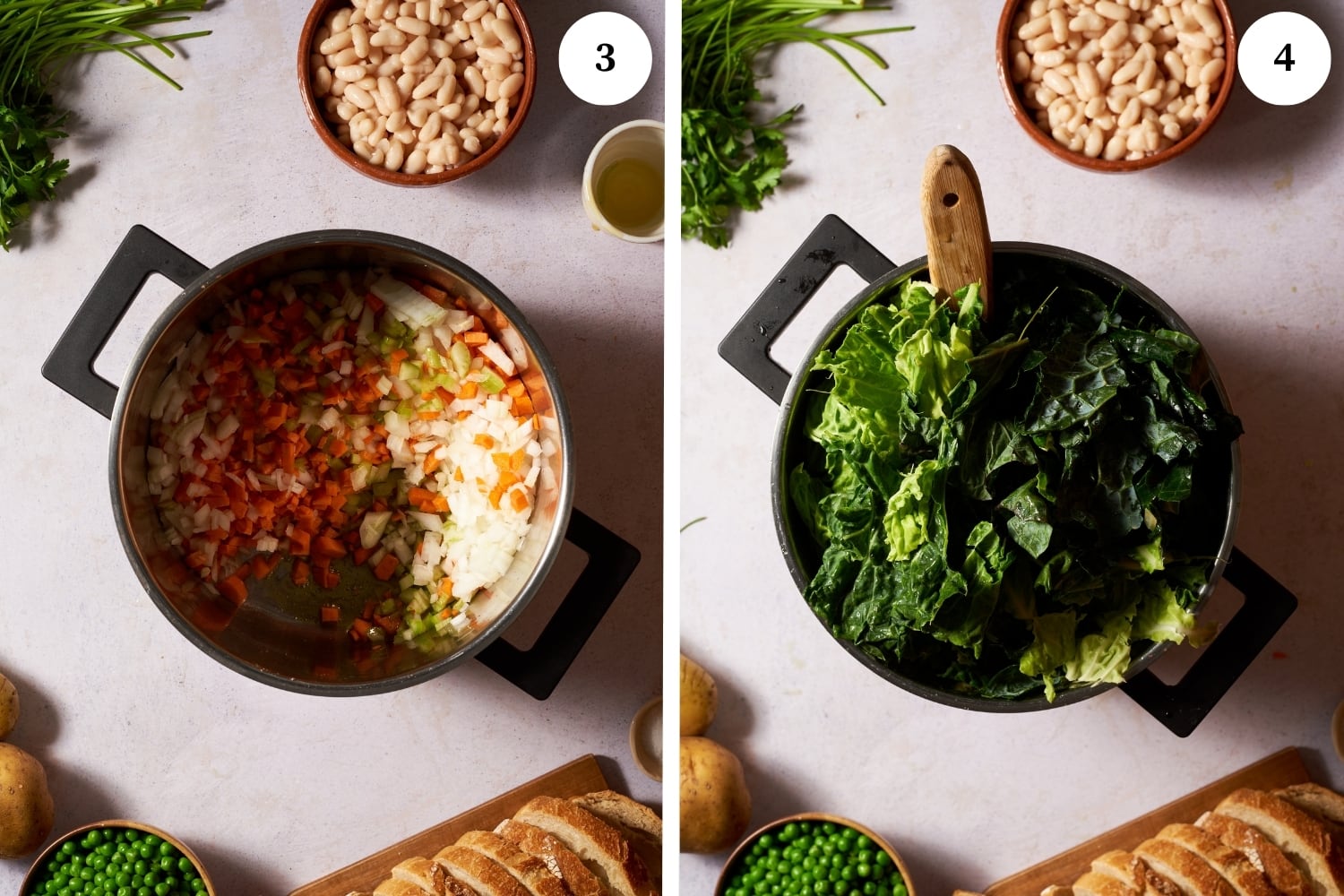
As soon as the cabbage begins to cook, add the tomato puree or peeled tomatoes (photo 5), then the potatoes, chopped zucchini, and peas (photo 6).
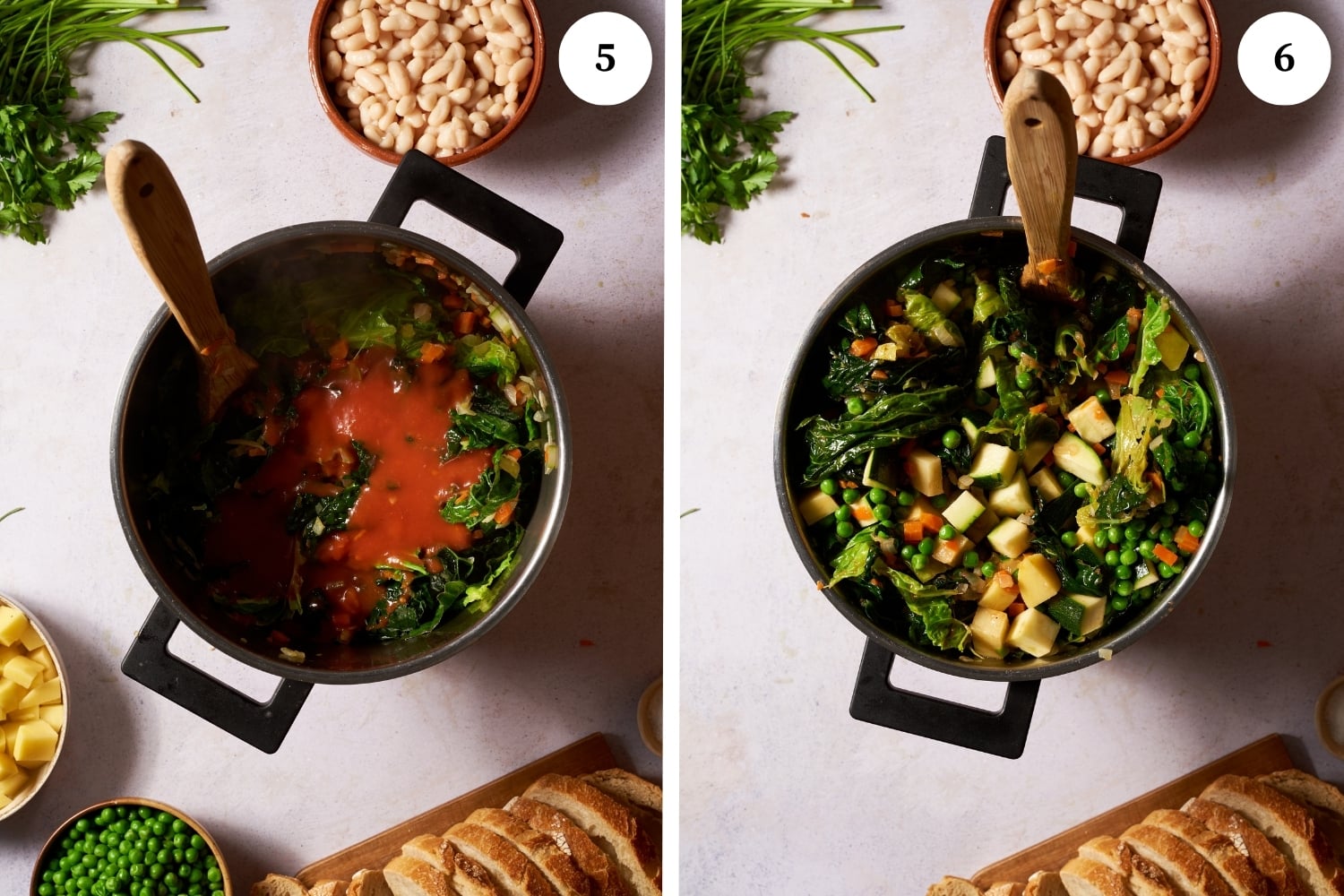
Now add the cannellini beans (photo 7) and add salt, and black pepper, and adjust the seasoning as desired such as parsley, fresh thyme, bay leaf, (photo 8) and cook stirring occasionally over low heat for about 1 hour, then turn off.
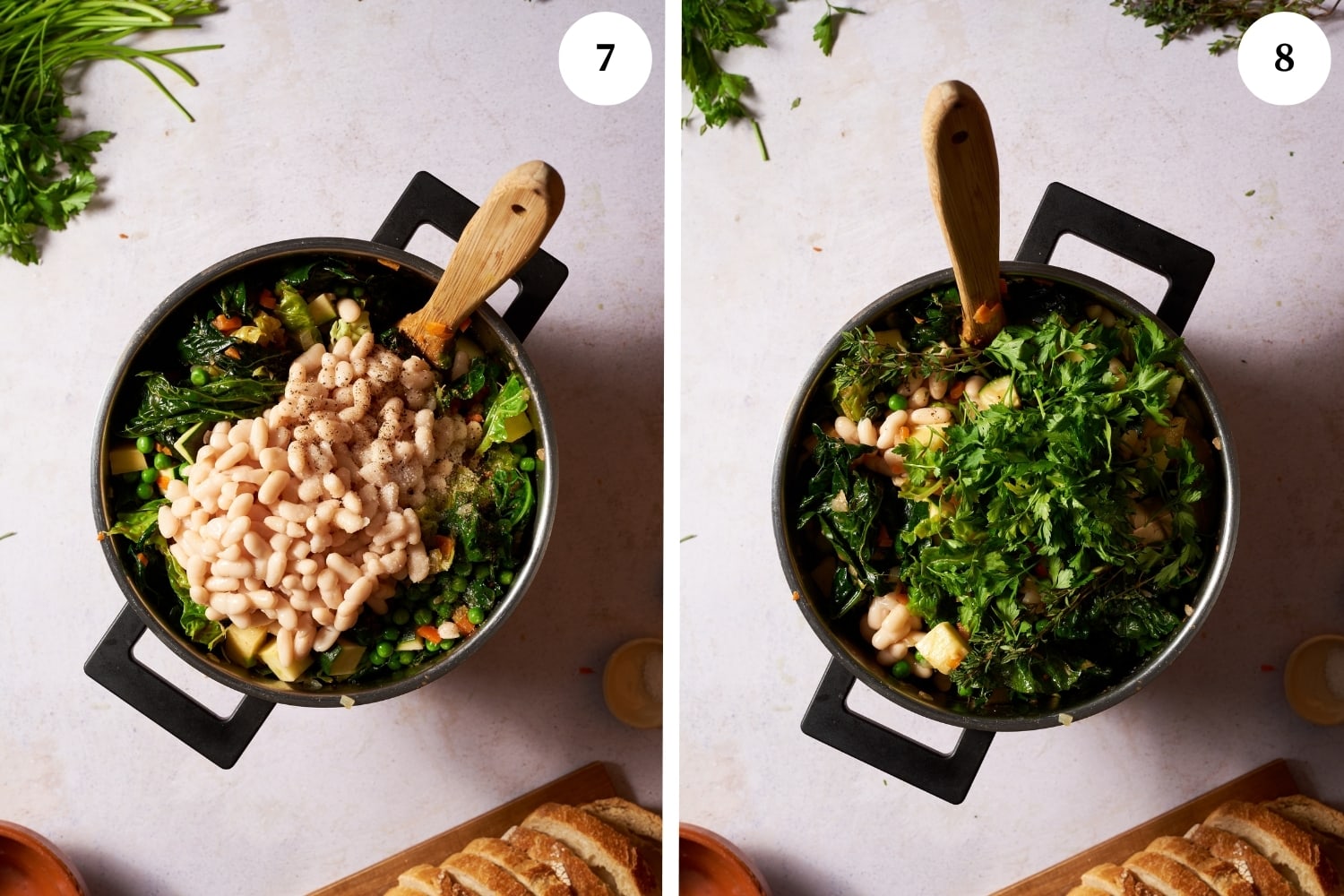
Slice the day-old bread into thin slices. Place a layer of bread in the bottom of a soup tureen or a large deep bowl (photo 9). Then alternate between pouring the cooked vegetables and a layer of bread until you have filled the tureen (photo 10). You can remove the bay leaves if you added them.
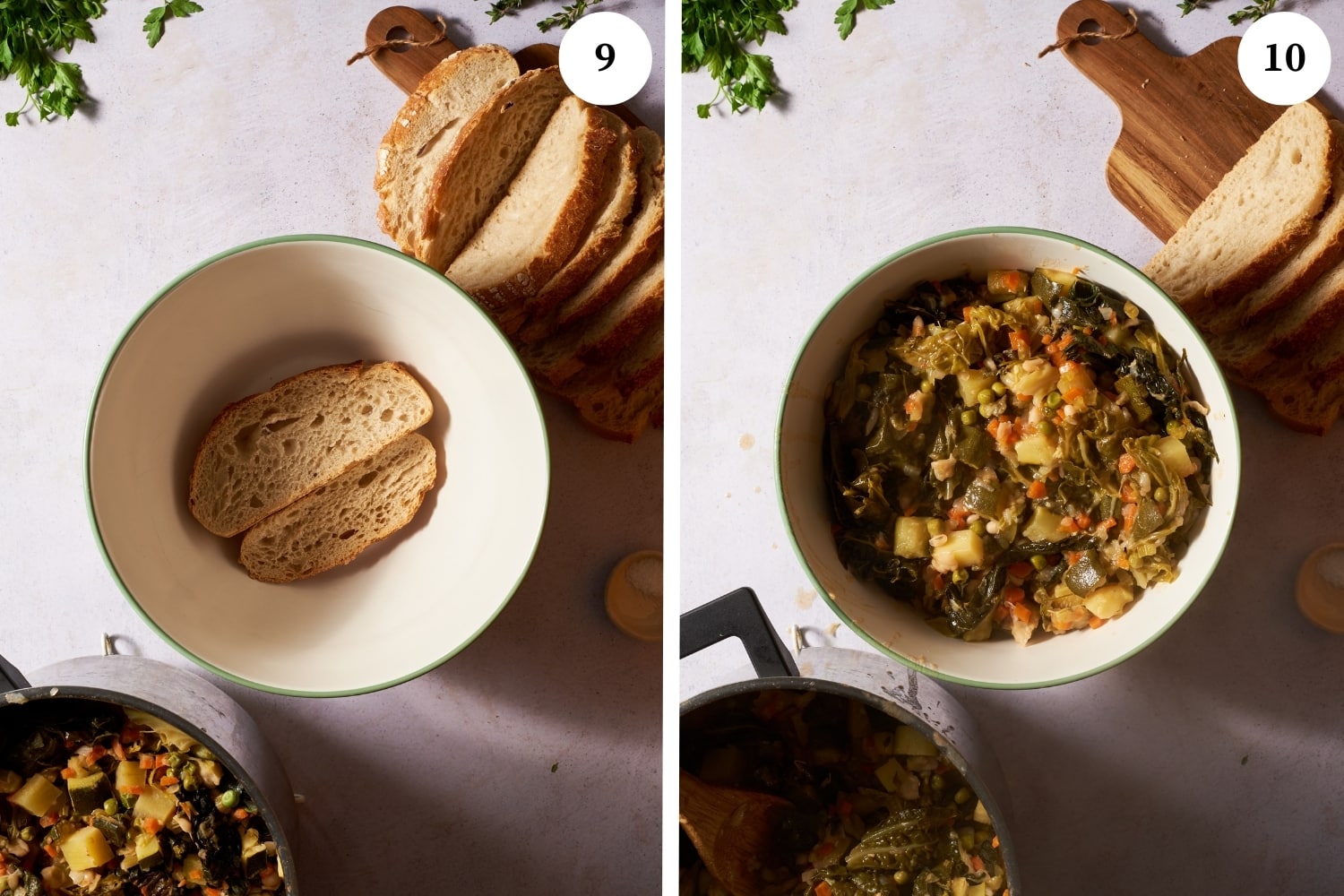
Cover and let sit for 20 minutes.
After resting, the soup is ready to serve. Remove a portion of the soup and serve in individual bowls with a sprinkling of Parmesan cheese if desired.
Don’t forget to add a drizzle of olive oil before eating this incredible comfort food.
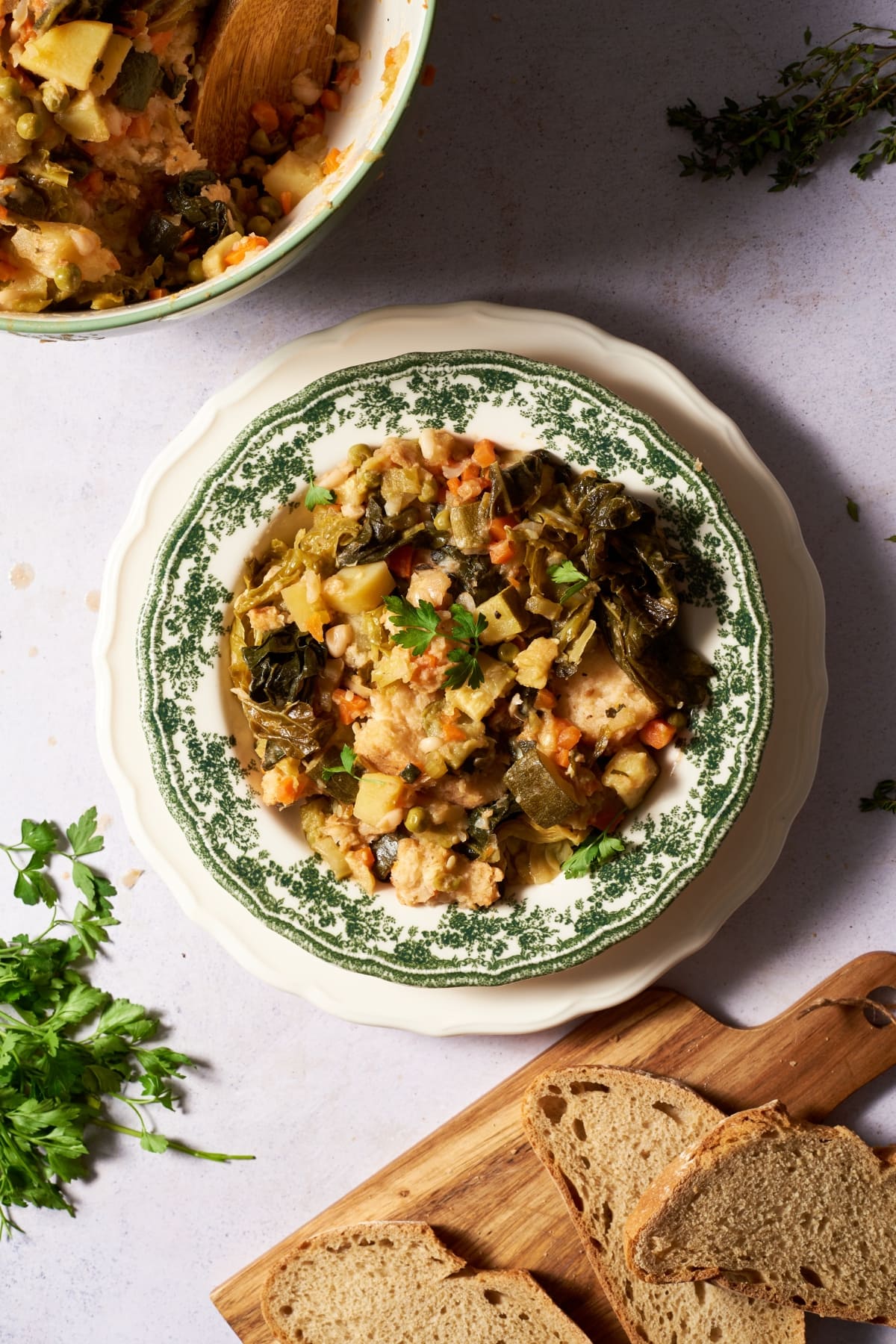
Try other soup recipes
This soup is really great reheated the next day. We recommend storing the soup in an airtight container for up to 3 days in the refrigerator. It is best stored without the bread, so you can remove and toss any remnants of bread before storing and then add new stale bread slices before serving the next time.
Ribollita is a true symbol of “poor” Tuscan cuisine. The predecessor to the modern ribollita recipe was already popular during the Middle Ages. At the time, noblemen had meat served over unleavened bread for meals which was then given to the servants who boiled the leftovers with whatever additional ingredients were available from the garden. These usually included herbs and vegetables such as celery, carrots, and cabbage. The soup was reheated and consumed over the following days. Today the recipe has been modernized and become a true symbol of Tuscan cuisine.
Soffritto is an Italian word that means “lightly fried”. It refers to the cooking process of finely chopping onion, carrot and celery and then sauteing the mixture in olive oil for several minutes and then using this as the base for sauces and soups to add depth and flavor to the dish.
